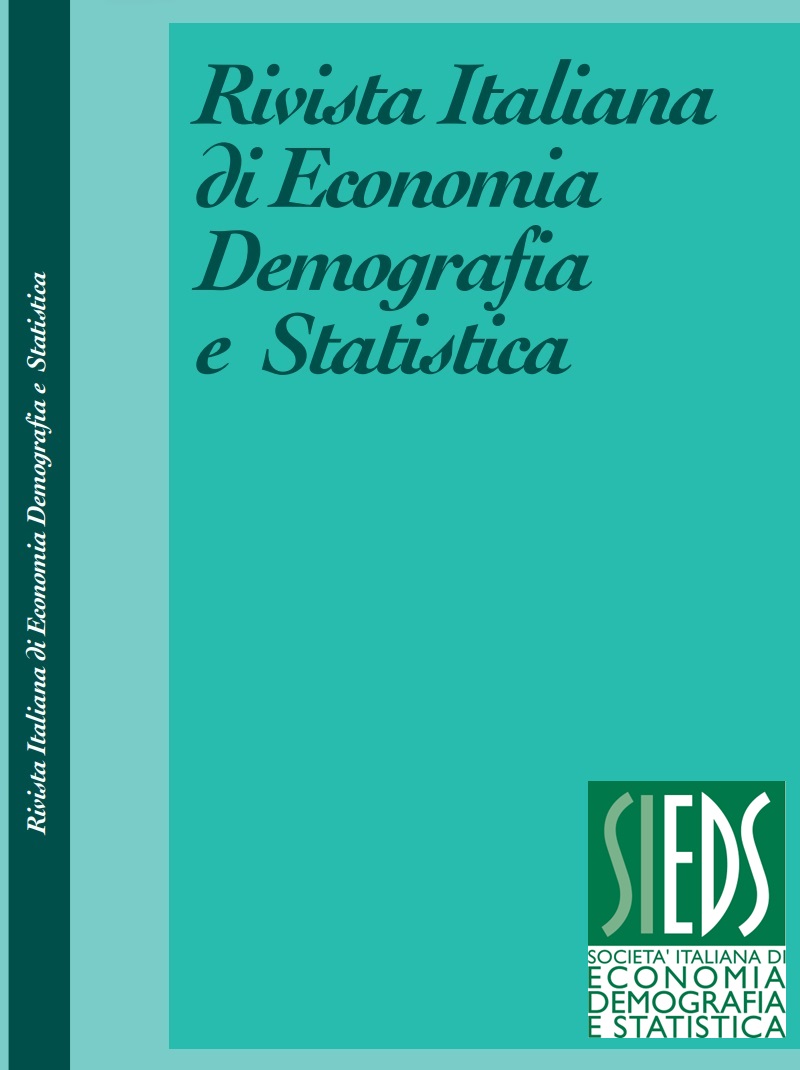Differential benefits of questionnaire redesign: implications for data quality and statistical burden across different respondent profiles
DOI:
https://doi.org/10.71014/sieds.v78i3.343Keywords:
questionnaire design, data quality, statistical burden, Research and DevelopmentAbstract
The aim of this paper is to show how different respondents benefit differently from methodological improvements in the questionnaire design.
When dealing with questionnaires, respondents differ in both the type and number of difficulties they face, depending on structural characteristics, core variables, and response strategies. This leads to differences in completion performance, with some respondents more likely to introduce inaccuracies, especially in quantitative information.
If the questionnaire is one of the main sources of non-sampling error, a good questionnaire design is a primary tool for maximizing accuracy. Data from the survey on Research and Development in business enterprises (RS1), collected before and after major changes to the questionnaire design, have been compared to explore differences in completion behaviour. Both descriptive and logistic model analysis, carried out to assess the impact of design changes intended to facilitate and improve the use of the unit of measurement in expenditure questions, along with the analysis of burden indicators, have shown the existence of different sub-populations, both in terms of accuracy and perceived burden. Profiling respondents has provided valuable insights into further opportunities for improvement.
References
BARCHERINI S., LORÈ B.M.R. 2022. Questionnaire Design as a Tool to Enhance Data Quality in the Italian Census of Agriculture. In: Book of abstract of ISBIS Conference 2022 on Statistics and Data Science in Business and Industry.
BARCHERINI S., BONTEMPI K., FAZZI G., LIANI S., LORE’ B., PIETROPAOLI S., ROSATI S. 2022. The respondent ad the focus of the questionnaire design, In UNECE Expert Meeting on Statistical Data Collection 2022, 26-28 October, Italy.
ISTAT. 2024. Le innovazioni nella rilevazione multiscopo qualitativa del censimento delle imprese - anno 2022. Roma: Istat.
BRADBURN N. 1978. Respondent Burden. Proceedings of the Survey Research Methods Section of the American Statistical Association, pp. 35-40.
BROWN T. 2022. The Art of Questionnaire Design, Journal of Survey Research, Vol. 15, No. 4, pp 234-256.
CECCARELLI C., FAZZI G., PIETROPAOLI S. 2022. Evaluation of Changing in Respondents’ Participation in the Surveys of Information and Communication Technologies Usage in Enterprises (ICT) and Research and Development for Business Enterprises (R&D), RIEDS, Vol. 76, No. 1, pp. 107-118.
CONVERSE J. M., PRESSER S. 1986. Survey Questions: Handcrafting the Standardized Questionnaire. Beverly Hills: Sage Publications. DOI: https://doi.org/10.4135/9781412986045
FRICKER., YAN T., TSAI S. 2019. Response Burden: What Predicts It and Who is Burdened Out? In BEATTY P., COLLINS D., KAYE L., PADILLA L., WILLIS G., WILMOT A. (Eds) Advances in Questionnaire Design, Development, Evaluation and Testing, chapter 8, New York: John Wiley & Sons, Inc.
HOSMER JR D. W., LEMESHOW S., STURDIVANT R. X. 2013. Applied logistic regression. Hoboken: John Wiley & Sons. DOI: https://doi.org/10.1002/9781118548387
OECD. 2015. Frascati Manual 2015: Guidelines for Collecting and Reporting Data on Research and Experimental Development. Paris: OECD Publishing.
WILLIMACK D. K., LYBERG L. E., MARTIN J., JAPEC L., WHITRIDGE P. 2004. Evolution and Adaptation of Questionnaire Development, Evaluation, and Testing Methods for Establishment Surveys. In PRESSER S. et al. (Eds.) Methods for Testing and Evaluating Survey Questionnaires, Hoboken, NJ: Wiley-Interscience, pp. 385- 407. DOI: https://doi.org/10.1002/0471654728.ch19
Downloads
Published
Issue
Section
License
Copyright (c) 2024 Sabrina Barcherini, Barbara Maria Rosa Lorè, Valeria Mastrostefano, Simona Rosati

This work is licensed under a Creative Commons Attribution 4.0 International License.



